
Move over, Ibiza: beach clubs in Bali have gone from ‘a little slice of heaven’ in the middle of nowhere to world beaters
- Bali has overtaken Ibiza as the beach-club capital of the world, and there are dozens of over-the-top venues to choose from on the Indonesian holiday island
- The newest, Luna Beach Club, takes design cues from the Burning Man festival in the US – ‘think Ibiza meets Las Vegas’ – and promises sustainability
In the year 2000, a triumvirate of investors from Australia, Indonesia and Britain opened Ku De Ta, a Mediterranean-style beach club in Seminyak, which in those days was just a cluster of rice paddies and fishing hamlets on the southwest coast of Bali in Indonesia.
“But the investors’ vision of a little slice of heaven at the end of the rainbow struck a chord with the Eurocentric crowd.”
Along with thousands of new hotels, restaurants and attractions, Bali has overtaken the Spanish resort island of Ibiza, home to Café Del Mar – one of the world’s first beach clubs – to become the beach-club capital of the world.

There are dozens of over-the-top venues to choose from on the island, including the 13th instalment of the Ibizan brand – Café Del Mar Bali, a whitewashed pleasure palace on the Seminyak beachfront with a domed amphitheatre and a 1,000 square metre infinity pool.
“It’s the biggest Café Del Mar ever built,” says John Zappia, CEO of Café del Mar Australasia. “Born in Ibiza, reborn in Bali – that’s our tagline.”

“Ibiza may be the home of beach clubs, but we can do more unique and innovative things here because we’re in a tropical paradise and a pro-business paradise,” says Finns co-owner Tony Smith, a former professional football player from Sydney, Australia.
Next door to Finns is Atlas Beach Fest, the biggest beach club in the world, occupying nearly three hectares (7.4 acres) of beachfront land and with a capacity of 10,000 people.
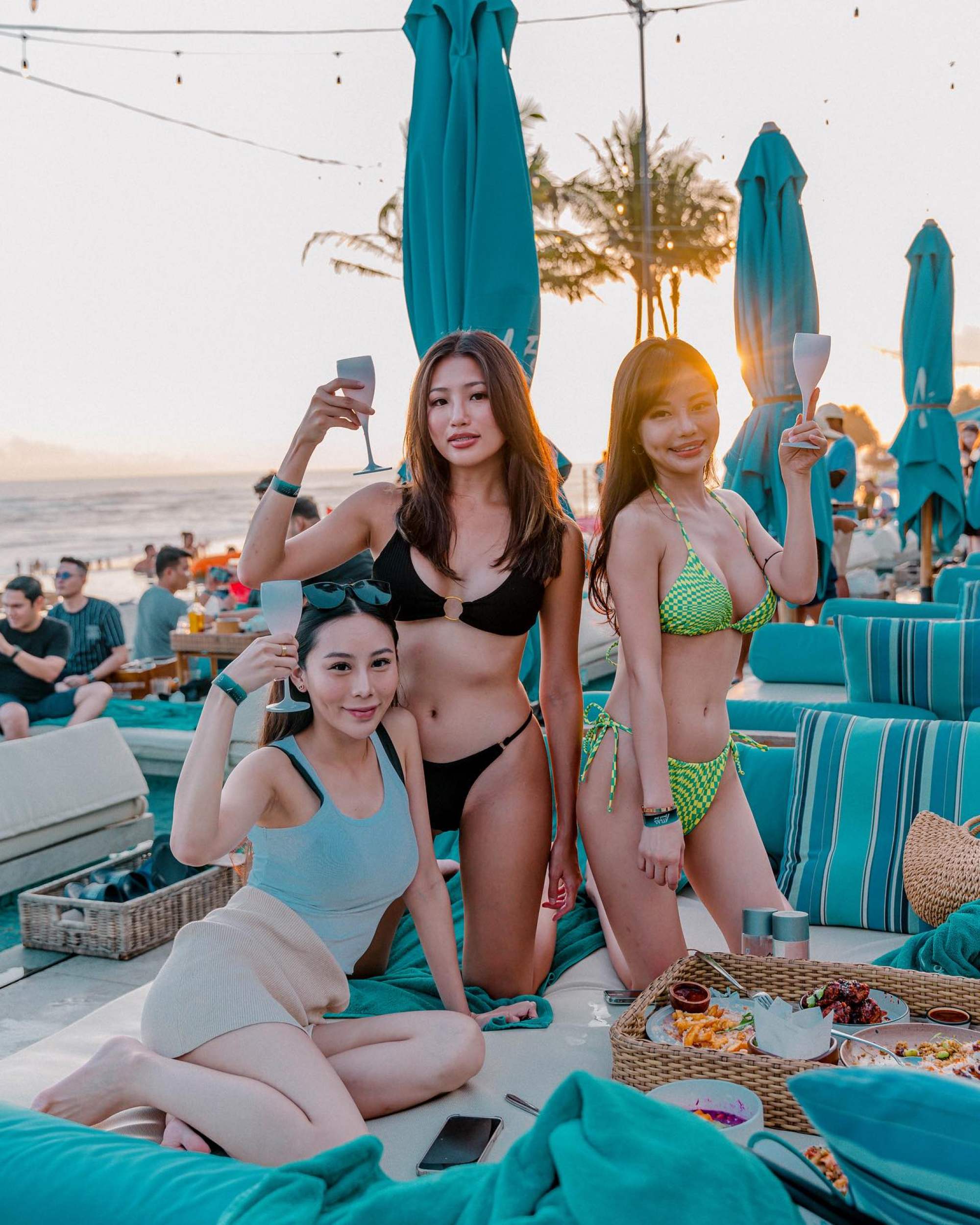
Billed as a “one-stop lifestyle centre”, Atlas features a half-colosseum that conceals an artificial waterfall, a retail village with 52 restaurants and bars, a 300-metre-long pool and a standing bar that stretches 1km (0.6 miles) from end to end.
The trend ignited by Ku De Ta nearly a quarter of a century ago is now coming full circle in Bali, with the opening of Luna Beach Club at Nyanyi, a black-sand beach a 90-minute drive from the airport, on Bali’s west coast.
It is one of 20-odd lifestyle projects under the Nuanu City project, a 44-hectare development that is described as sustainable and aims to “transform Bali’s urban landscape”.
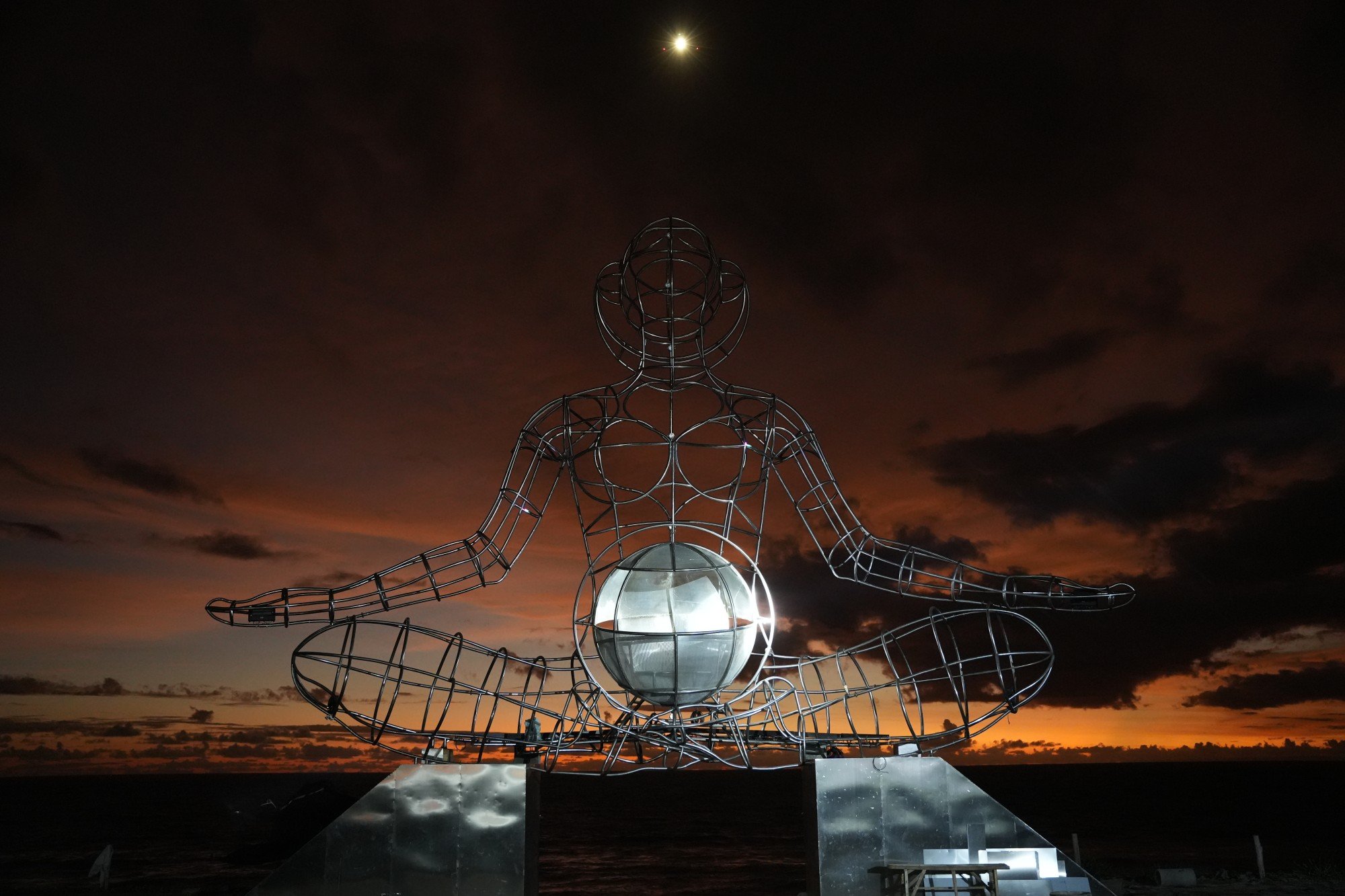
The first sculpture guests see on entering the club – a pair of 10-metre-tall guardians that together form a gateway – was created by Daniel Popper, a South African artist whose large-scale flammable sculptures helped define the Burning Man zeitgeist.
“At night the two statues will light up with 3D projection mapping,” says Smyth, who is now Luna’s general manager. The South African previously worked at Café Del Mar Bali as well as Ku De Ta.
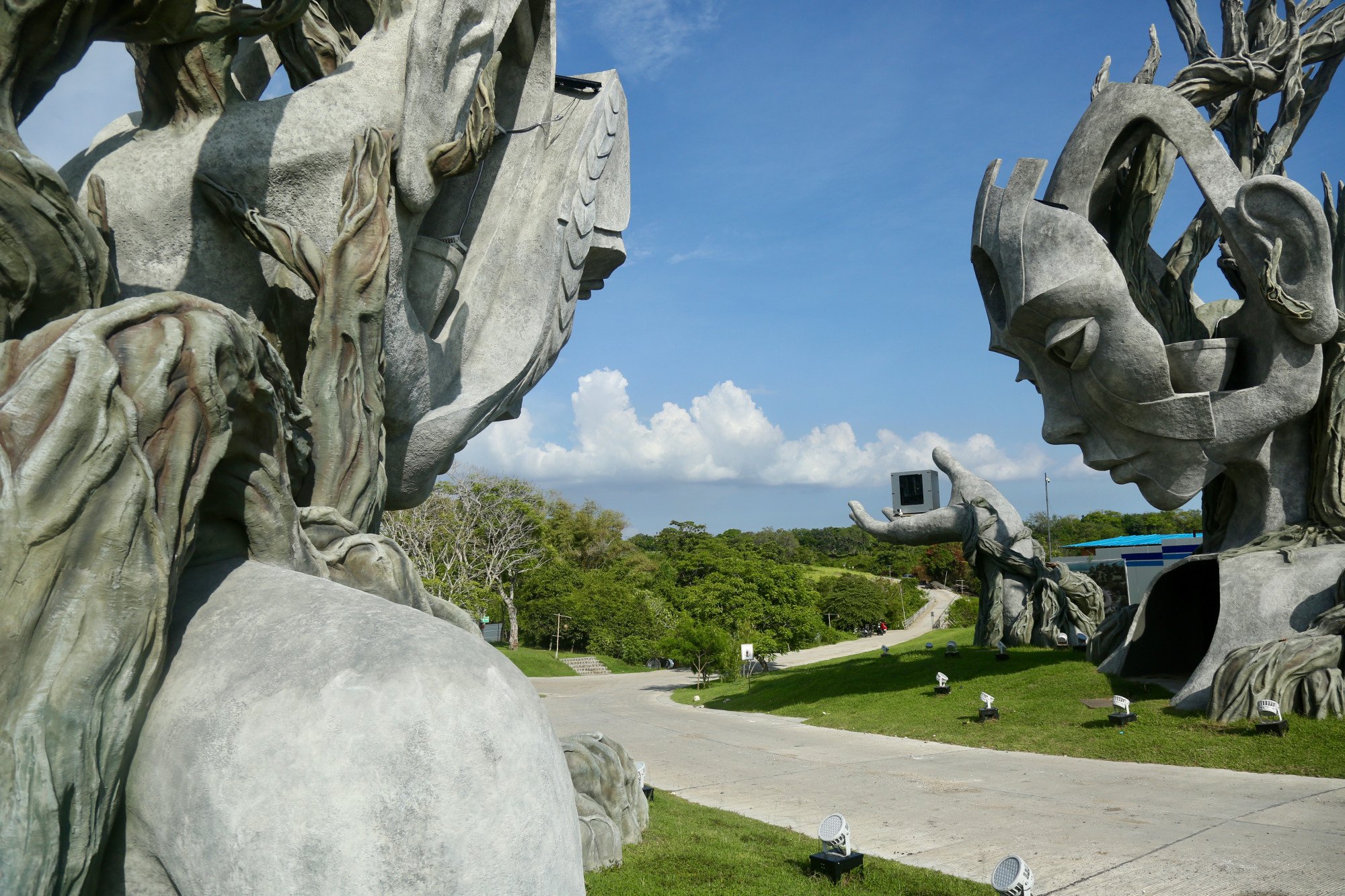
Luna has five restaurants and bars, each of which is a work of art. The signature Luna Restaurant is set under a giant vortex that spirals up and out from a massive central column modelled on the banyan tree, which is considered holy by the Balinese.
The furniture, mid-century tropical, is all bespoke and handmade. The waiters’ stations are encircled by intricate hand-carved dragons. The open-air kitchen, led by James Ephraim, former executive chef of Mozaic, one of Bali’s most iconic fine-dining restaurants, is full of contraptions for cooking over fire.
Overall, the club looks like a set from a Disney jungle cartoon, with a superstructure made from locally sourced eco-friendly bamboo.

Adds Smyth, “The roof was not an easy build. We had a lot of leaks in the beginning. But the beauty of it is, when something breaks, you can cut out sections and replace them.”
A waterslide (there is a staircase, too) leads from the restaurant to Utopia, an underground pool club set in an artificial cave with 180-degree Indian Ocean views. LED lights that change colour in time to the music line the inside of the pool, the bar and booths.

“Think Ibiza meets Las Vegas, everyone in bikinis and swimsuits, with more premium options in terms of spirits and a great place to see the sunset or party late into the night,” Smyth says, on a pre-opening tour of the grounds, during which I challenge him on Nuanu’s lofty sustainability claims: “It is beyond sustainable,” the ESG section of Nuanu’s website reads.
From the Luna’s pool cave, meandering pathways lined with tropical plants take us past coastal bluffs pockmarked with cocoon-like day beds to Elysium, a clifftop restaurant and event space with a curvilinear design that, from inside, looks like the ribbed cavity of a whale.

We also visit the Luna Beer Garden and tequileria, where builders are installing stainless-steel versions of hangis – underground pit ovens used by South Pacific Islanders to smoke meat and vegetables without losing their natural juices.
Then there’s Jelly Beans, a Willy Wonka-esque dessert and gelato bar that morphs into a cocktail bar at night; and the Tree Pods, a series of bamboo tree houses interconnected by elevated climbing nets that will doubtlessly prove popular with children.
Between these venues are more oceanfront infinity pools, more luscious gardens, more tactile works of art and more giant sculptures, including a galvanised-steel frame shaped like a sitting Buddha with symbols of the moon, Earth and sun that becomes a DJ stage at night, and a seven-storey lighthouse that will also be lit up with 3D projection mapping.
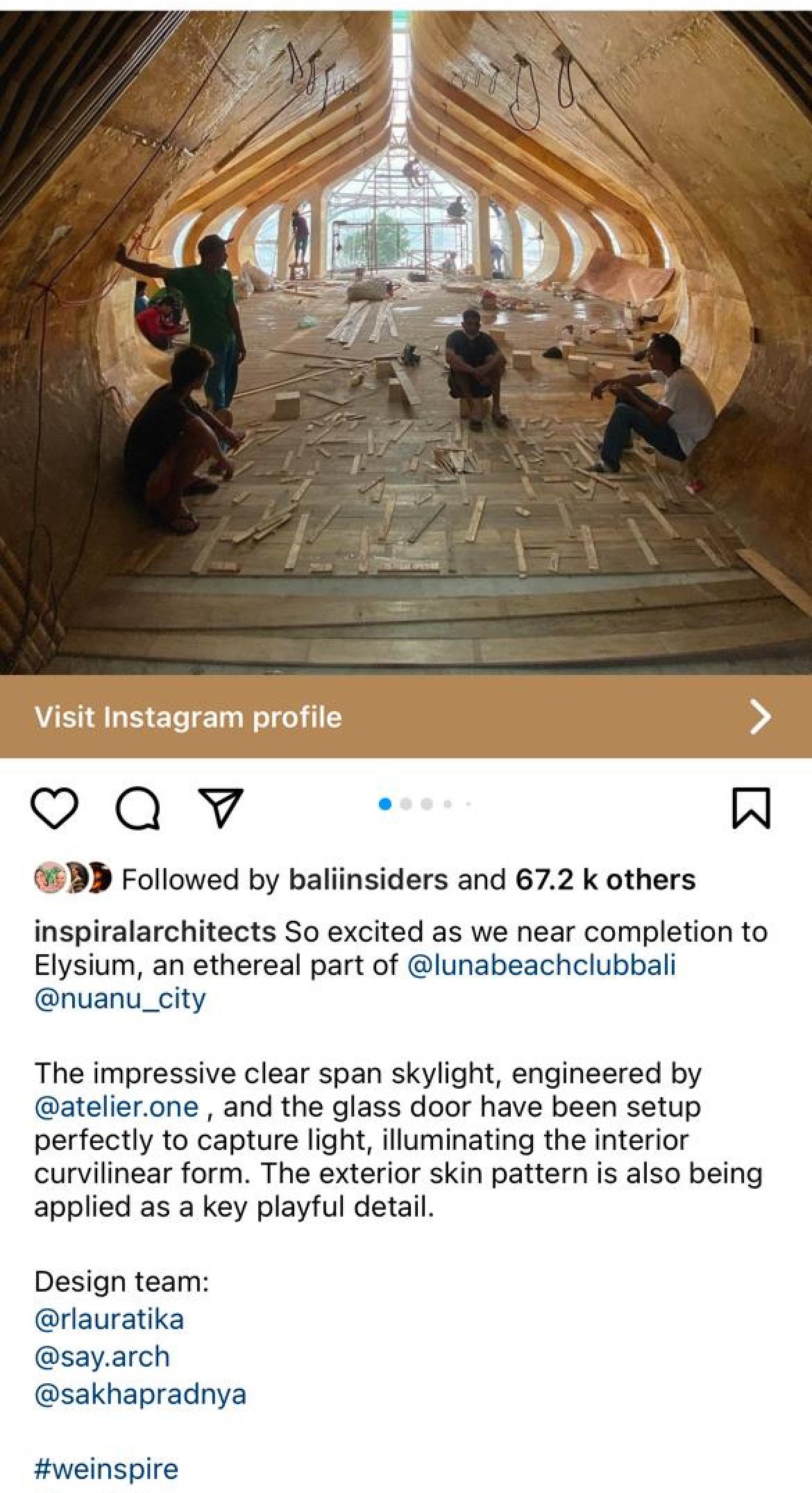
Every level offers different interactive experiences, including a station on the top that allows guests to create a message and send it directly to space. Each message is encoded with unique visual arts and sounds, presumably to be picked up by a passing alien spaceship.
“When the client came to me with a master plan for Nuanu, most of it was already planned out,” says Hearn, who hails from Britain. “But he had a two-hectare space right on the beach and didn’t know what to do with it.
“The funny thing is they said they didn’t want a beach club. The brief was for a playground – an exploratory field where people could have all these insane user experiences,” says the architect.
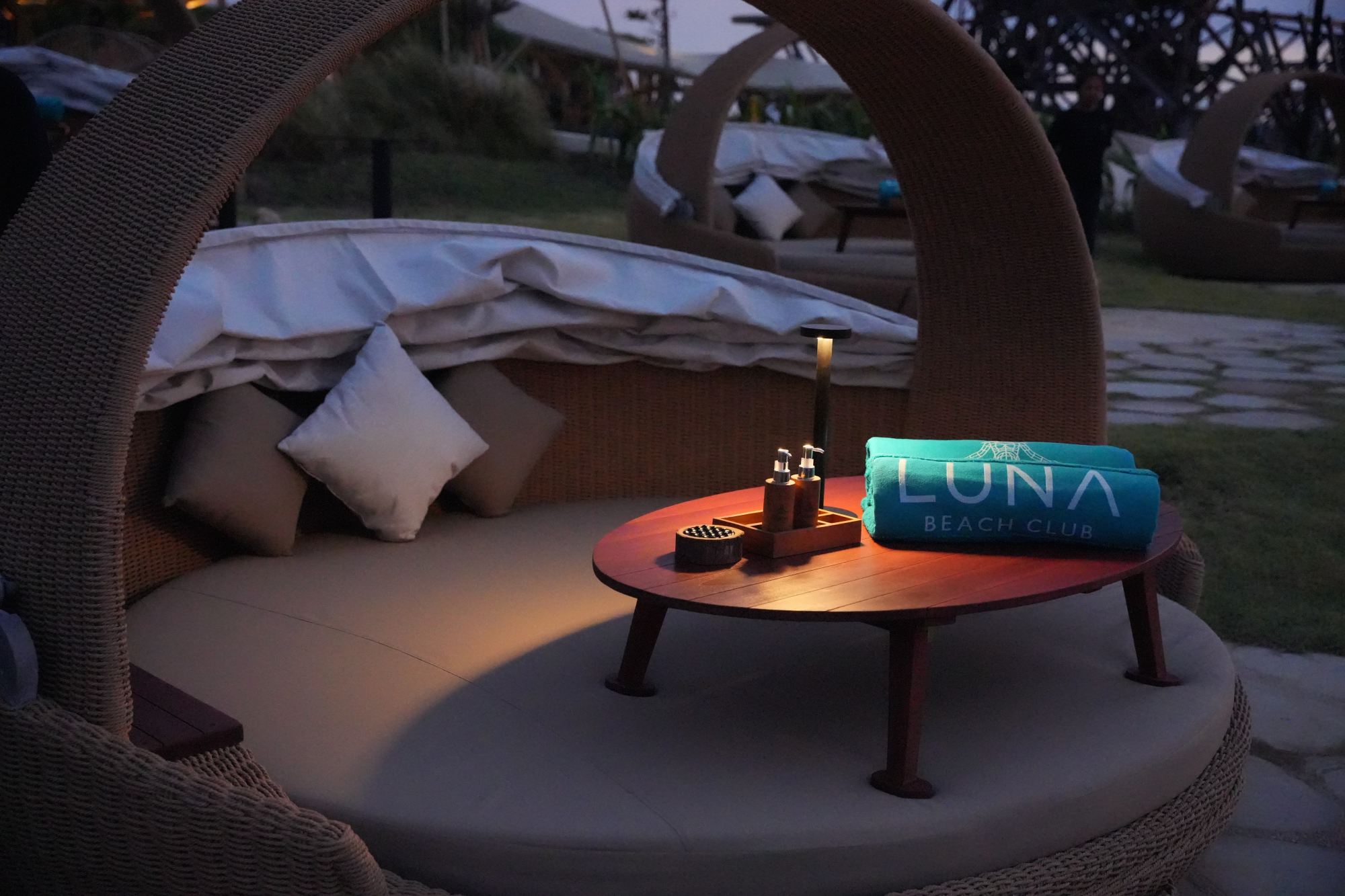
“So we came up with the idea of creating destinations within the destination, different areas that offer different holistically hedonistic experiences and workshops, all very tactile, all very flowing, and walkways that guide you from one to the next with more interesting things to see and do on the way.
“Luna is called a beach club but this is not your typical beach club.”
Relaxing elsewhere
Phuket, Thailand, is another Southeast Asian hotspot that has an established beach-club scene – so established, in fact, that even the Phuket Elephant Nature Reserve, with its “strong roots in the island’s community”, feels the need to list its own top five, as “recommended by experts”.
As well as the original, the Catch Beach Club, which opened on Bang Tao Beach in 2008, the elephant lovers also rate the Carpe Diem Beach Club (also on Bang Tao Beach); the Xana Beach Club (part of Bang Tao’s Angsana Laguna beach resort); Café Del Mar Phuket (on Kamala Beach); and Beach House Layan (on Layan Beach).
Last August, Phuket also got what’s been described as the world’s first “floating beach club”, Yona, which may not have any actual sand on board, but does have a 22-metre infinity pool surrounded by private cabanas, sun loungers and spots in which to sip cocktails.
The latest club to join the fray in Phuket is MuMu Clubhouse, which, at the time of writing, was all set to stage its launch party on March 9, complete with high-profile DJs.
The “sanctuary for kindred spirits, seekers and wanderers; connoisseurs of connection, tempo and bass” – as the owners describe it – stands beside Phuket’s largest man-made lagoon, inland from Bang Tao Beach.
Over in Vietnam, Da Nang most certainly doesn’t have a beach-club culture, but it’s about to get its first club, nonetheless.
Opening on March 15, NOX Beach Club extends along a 4km-long stretch of sand next to the Hoiana Resort & Golf. Part of the New World Hoiana Beach Resort, it is “inspired by Hoi An, the enchanting Unesco World Heritage town just a short drive away” and “will create a community of like-minded beach lovers, foodies and fun seekers”.
Nighttime parties on the sand are promised, but the press release suggests unrestrained hedonism – which is a selling point for some of the beach clubs in Phuket and Bali – is not quite what the owners of NOX are going for.
Mark Footer

